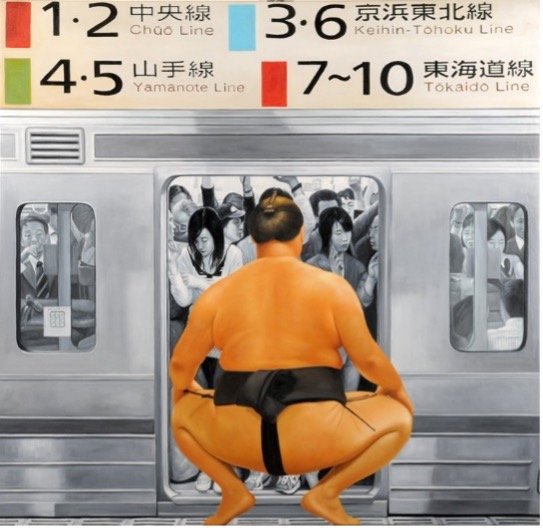Our resident writer Michaela Hall again, writes a pa piece that draws our attention to a different way of looking at our theme of Beginings and Endings, through nostalgia, and at what piont does the begging start and the ending end or are they just a continuous rollercoaster?!
Fond reflections
Beginnings and endings are a part of life, something which we all know but find hard to come to terms with. Some are exciting and positive whilst others aren’t so much and are harder to deal with. We live in the moment in between of constant change and evolution, yet we often rely on recording the process so that we can look back at different points of this journey and reflect. This nostalgia we focus on is often how we acknowledge changes, beginnings, or endings and this is something that is widely focused on in art.
Japanese artist Ryoko Wantanabe creates pieces that focus on a nostalgic image of traditional Japan, contrasted with modern day Japan. Striking and colourful depictions of the images we associate with traditional Japanese culture such as geishas and sumo wrestlers are depicted in busy crowded and contemporary scenes where they absolutely stand out and drown the background out. These works are bold and determined to be seen in a way that suggests this nostalgic focus is a tool for ensuring that the beginning of something new in Japanese society does not have to mean the ending of another – a way of using reflection to play with the idea of time. The painting ‘Train is leaving again’ (2010) highlights an almost glowing and fluorescent detailed and beautiful geisha character in contrast to a more blurred, monotone and black and white carriage of subway passengers. The contrast between old and new is highlighted here by the fact that the only other thing of colour in the piece is an obviously contemporary underground sign. Similarly in ‘Chuo Line’ (2009) we see the same approach. This time a vibrant and colourful sumo wrestler faces a black and white carriage of passengers squatting, with only the sign above the train also in colour. This humorous approach to composition creates eye catching imagery, reminiscent of advertising that viewers can’t pass by and therefore, can’t ignore the nostalgic geisha and sumo wrestler.
Images of nostalgia are generally fond and positive in their reflection, of a time of something precious and enjoyed. This is something Bulgarian artist Trayko Popov demonstrates in his work. The artist is well known for an illustrative style and their colourful and playful pieces feature nostalgic imagery that “encourages reflection”. In the painting ‘Popcorn. Nostalgic. Childhood Painting’ we see a image of a van selling pop corn amongst a small red car and chef – even though this isn’t likely a scene we have all seen – the image seems universal in that we all relate this to some sort of childhood memory, aided by the pop of pink colour in the background that brings similar associations. Similarly, in ‘Stay warm in Winter’ the bright popping colours and scene of a red bus travelling a cold winter journey also seems so familiar to us all. Popov’s works are powerful in their ability to transport us to a different place, a different time.
In different ways, both artists manage to use their work as a tool to create emotion, transformation and journey. Despite the fact they don’t represent one beginning or end their very existence makes us think about those moments, time and change. They use nostalgic elements and approaches to re-assure the viewer and turn the pondering of time, which can often be challenging into a positive, warm and humorous experience. They encourage us to look at time and our existence, culture and change fondly.





